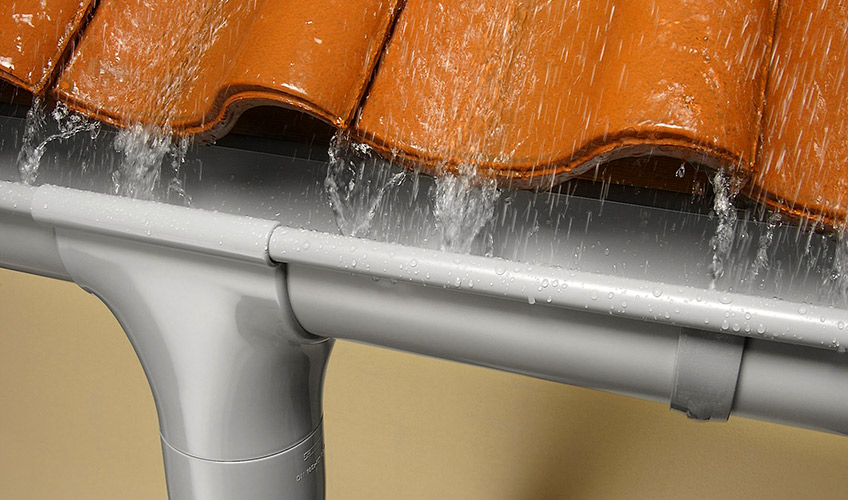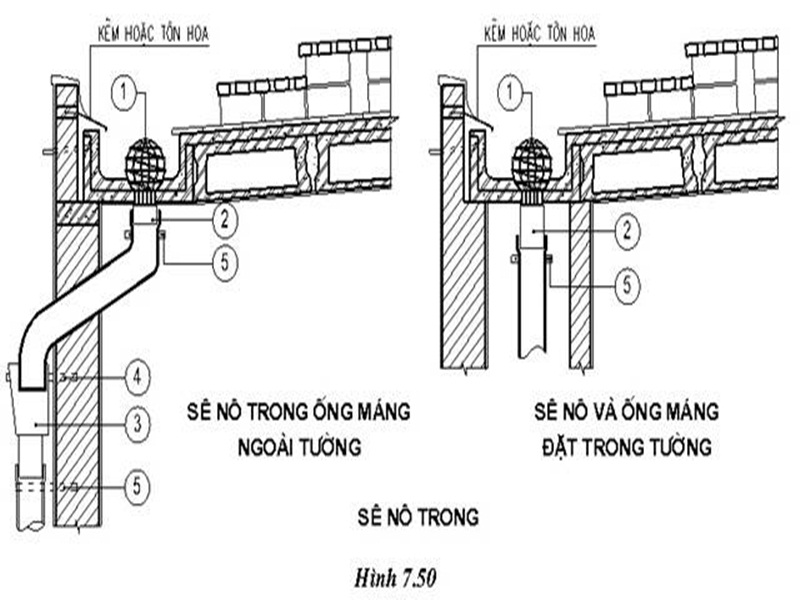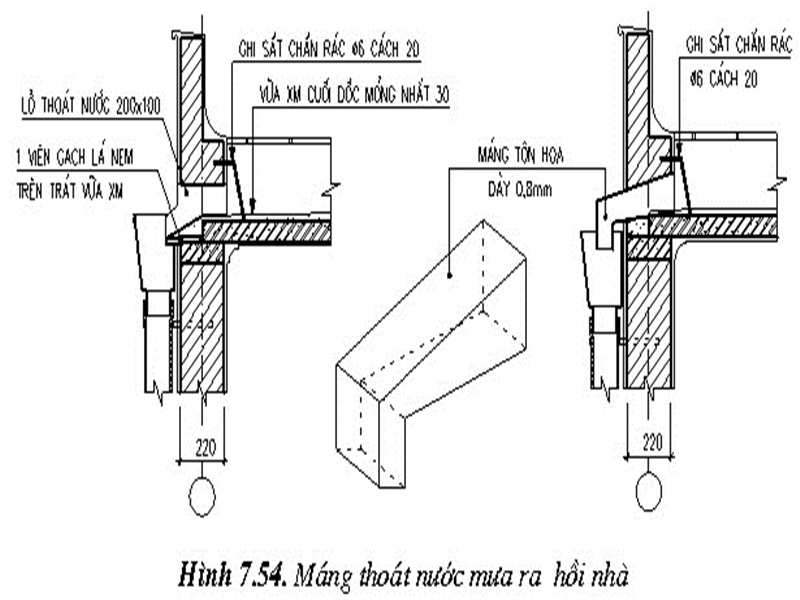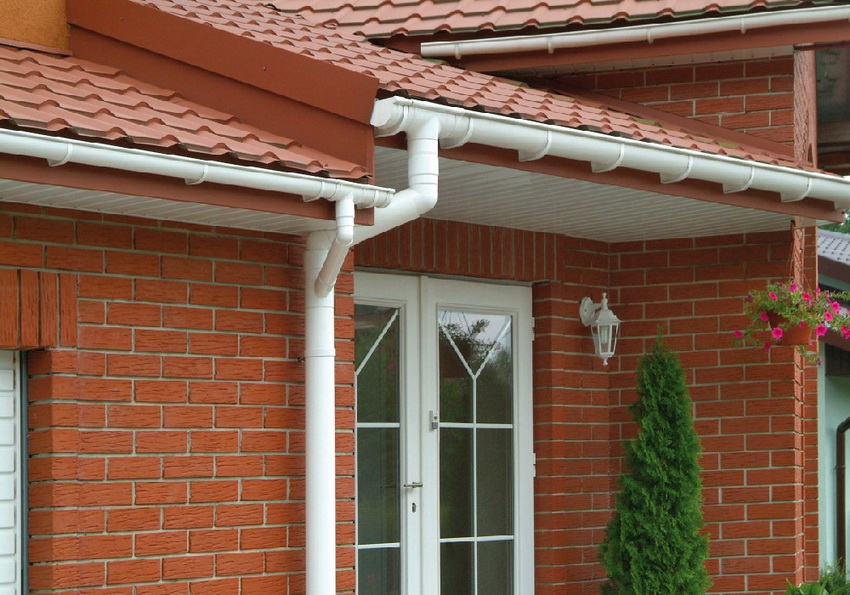Installing rainwater pipes is an extremely important item when building any project. Reasonable drainage pipe design not only brings efficiency but also helps to increase durability, aesthetics as well as save construction costs. Therefore, choosing the type of pipe, the diameter of the drainage pipe as well as the related factors in the design and construction process is necessary to bring about a desired project both in terms of aesthetics and technique. .
Please consult with P69 Company on how to install rainwater drainage pipes according to the standard size.
What is the purpose of installing rainwater drainage pipes?
- As the name of the rainwater drainage pipe proves the role of this item in the construction process.
- The rainwater drainage pipe system is a system of pipes, seperators, roofs, manholes, etc. to ensure the collection of all generated rain water and ensure the technical flow of water.
- The necessary requirement of the rainwater drainage system is to transport enough volume and volume of water drained by rain during the time of sudden increase in rainfall.

Design principles for installing rainwater drainage pipes on the roof
- Rainwater drainage pipes are arranged so that the shortest;
- The slope ensures the fastest drainage of rainwater;
- The diameter of the rainwater drainage pipe must ensure to maintain the drainage condition during the heaviest rain.
What is the role of installing rainwater pipes on the roof?
- Ensure that the entire amount of rainwater generated does not stagnate on the roof, does not seep back into the house and does not cause reflux.
- Good rainwater drainage will not cause moldy phenomena as well as affect the structure and aesthetics of the building.
- If the rainwater drainage system is not good as well as unable to maintain the drainage, it is easy to arise, so harmful microorganisms, flies, mosquitoes as well as bacteria, mold …
- The design of a reasonable rainwater drainage system contributes to increasing the ability to make use of neighboring spaces such as entertainment rooms, bedrooms, offices..

How to install a rainwater drainage pipe
Rainwater drainage systems are usually installed vertically and the installation process needs to meet the following standards:
+ Minimum slope is 45 degrees
+ With the terrace area, the roof floor is over 100m2 long, it is necessary to install 6 drain pipes, 4 positions for 4 corners and 2 positions in the middle
+ For terraces or roof decks that need to be installed a septum, this is a U-shaped gutter part, with most of the septum made of high-quality plastic, galvanized steel with a slope equivalent to 0 ,5%

+ The top of the rainwater drainage hole should be installed with a garbage ball or a garbage filter, to avoid the case of garbage, leaves or foreign objects spilling down causing blockage of the water pipeline system.
+ Around the neck of the rainwater drainage pipe, it is necessary to use very good waterproof glue and carefully seal it to avoid the situation of water movement on the roof floor causing water to seep into the wall of the house.
+ During the installation process, it is necessary not to use too many shrinks, joints and the construction process needs to comply with the drawings and design requirements. If you do not have professional knowledge, you should seek technical advice
Standards for the design and installation of rainwater drainage pipes
The process of design, construction and installation of the rainwater drainage pipe system needs to comply with the standards of size, diameter, depth, slope, etc., in detail below.
1. Dimensions and diameter of rainwater drainage pipe
Dimensions of horizontal discharge rainwater pipe
|
Diameter
|
Rainwater flow (Liters/hour) |
Attention
|
|
| Slope 1:50 | Slope 1:100 | ||
| 27 | 70 | 50 |
Do not use the exhaust manifold
|
| 34 | 125 | 88 | |
| 49 | 247 | 175 |
Exhaust manifold can be used
|
| 60 | 473 | 334 | |
| 90 | 900 | 525 | |
Dimensions of vertical discharge rainwater pipes
| Diameter (mm) | Amount of condensate (liters/h) | Note |
| 21 | 220 |
Do not use for exhaust manifolds
|
| 27 | 410 | |
| 34 | 470 |
Use for exhaust manifold
|
| 49 | 1440 | |
| 60 | 2760 | |
| 76 | 5710 | |
| 90 | 8280 |
2. Burying depth of rainwater drainage pipe
For wall mounted rainwater drainage pipes, the buried depth ranges from 10 to 20 cm, with the system placed deep underground, the depth ranges from 50 cm to 1 m, to avoid letting the pipe lie too far below the hole. gas, 20 cm . from the wastewater level
3. Formula to calculate rainwater drainage pipe
Calculation of rainwater drainage on the roof is calculated by the formula:
Q = KFq5/1000 (l/s)
Where: F = F roof + 0.3 F wall
With:
- F: water collection area (m2)
- Fm roof: projection area of the roof
- Fwall: Area of vertical wall in contact with roof or height on roof (m2)
- K: coefficient taken as 2
- Q5: The intensity of l/s.ha calculated for the locality with a rainy period of 5 minutes and the period exceeding the calculated intensity by 1 year (p=1) can be found in Appendix TCVN 4474: 1987
Calculating the required number of risers to collect rainwater is determined by the formula:
Nod Q/qođ
In there:
- Q: Calculated volume of rainwater on the roof (l/s)
- qod: Calculated flow rate of 1 riser to collect rainwater according to table 9 TCVN 4474: 1987
- Calculation and selection of diameter of horizontal drain pipes (connecting the feet of vertical pipes) with a fullness of 0.8
VD:
- Pipes with a diameter of 49 mm can drain water for a roof area of 40m2.
- 60mm pipe can drain water for a roof area of 50 – 70m2.
- The 90mm pipe can drain water for a roof area of 70-100m2.
- The 110 mm pipe can drain water for an area of 100 – 150m2.
- The 125mm pipe can drain water for an area of 150-200m2.
- The 140 mm pipe can drain water for an area of 200-300m2.

Requirements when installing rainwater drainage pipes
Rainwater drainage pipes are often designed in a vertical direction, so you need to pay attention to some of the following standards:
1. With terrace area
For a terrace with a roof length > 100m2, you need to install 6 drains, 4 positions for 4 corners and 2 positions 2 in the middle.
2. Each rainwater drainage system needs to be installed with a seno
This is a part of the gutter designed in the shape of a U. For most of the water troughs, they are made of plastic, corrugated iron or zinc, the size and length correspond to the roof with an inclination of 0.2 %.
3. Equipped with a rainwater collection funnel for the outlet hole
The top of the outlet hole should be equipped with a rainwater collection funnel with a garbage bridge to avoid waste coming from leaves, foreign objects or animals entering the pipeline, causing blockages.
4. Use waterproof glue
Around the neck of the rainwater pipe, it is necessary to apply a very good waterproof glue to avoid the situation of floor seepage caused by rain water.
The construction and installation of rainwater drainage pipes must comply with the design drawings, technical requirements on dimensions, installation of septum and garbage fenders. If you are an architect with in-depth knowledge in the construction industry, you will surely know what is essential and emphasized. Therefore, this will be the information to supplement the knowledge you lack.

Dimensions of rainwater pipes for residential systems
Based on my experience in the industry, I will give some suggestions on the standards for rainwater drainage on the roof. For rainwater drainage pipes, you should use pipes of Ø 60, for larger projects, pipes of Ø 75 should be used, and for the rest, companies and enterprises should use pipes > Ø 90.
The problem of the rainwater drainage system is blocked
In fact, storm drains rarely get clogged. But if congestion occurs, it is also very difficult to solve. Specifically:
- Not completely blocked, but only partially blocked, when it rains heavily, the phenomenon of reflux occurs, so it is difficult to unclog with a pressure machine.
- The size of the rainwater pipe is always large, arranged along the height of the house. Because the main cause of the blockage is leaves and complicated pipes, it is difficult to clear the blockage.
Ways to unclog rainwater drainage systems
- Use the pressure pump to bring the water to great pressure, breaking the blockage.
- Use a spring machine to completely clear the blockage.
Note: do not use chemicals to clear the blockage because it can make the blockage worse.
Contact us today for a free consultation and answer at:
Contact information P69 – M&E . M&E Contractor
Address: No. 6/165C Xuan Thuy, Cau Giay District, Hanoi
Website: https://p69.com.vn/
Hotline: 02437688156 – 0965937799
Email: kd@cokhip69.com.vn
Facebook: https://www.facebook.com/p69nhathaucodien
LinkedIn: https://www.linkedin.com/in/congtyp69/
Youtube : https://www.youtube.com/channel/UCOUwCnE5iGj8iqe_ZIUM7oA

